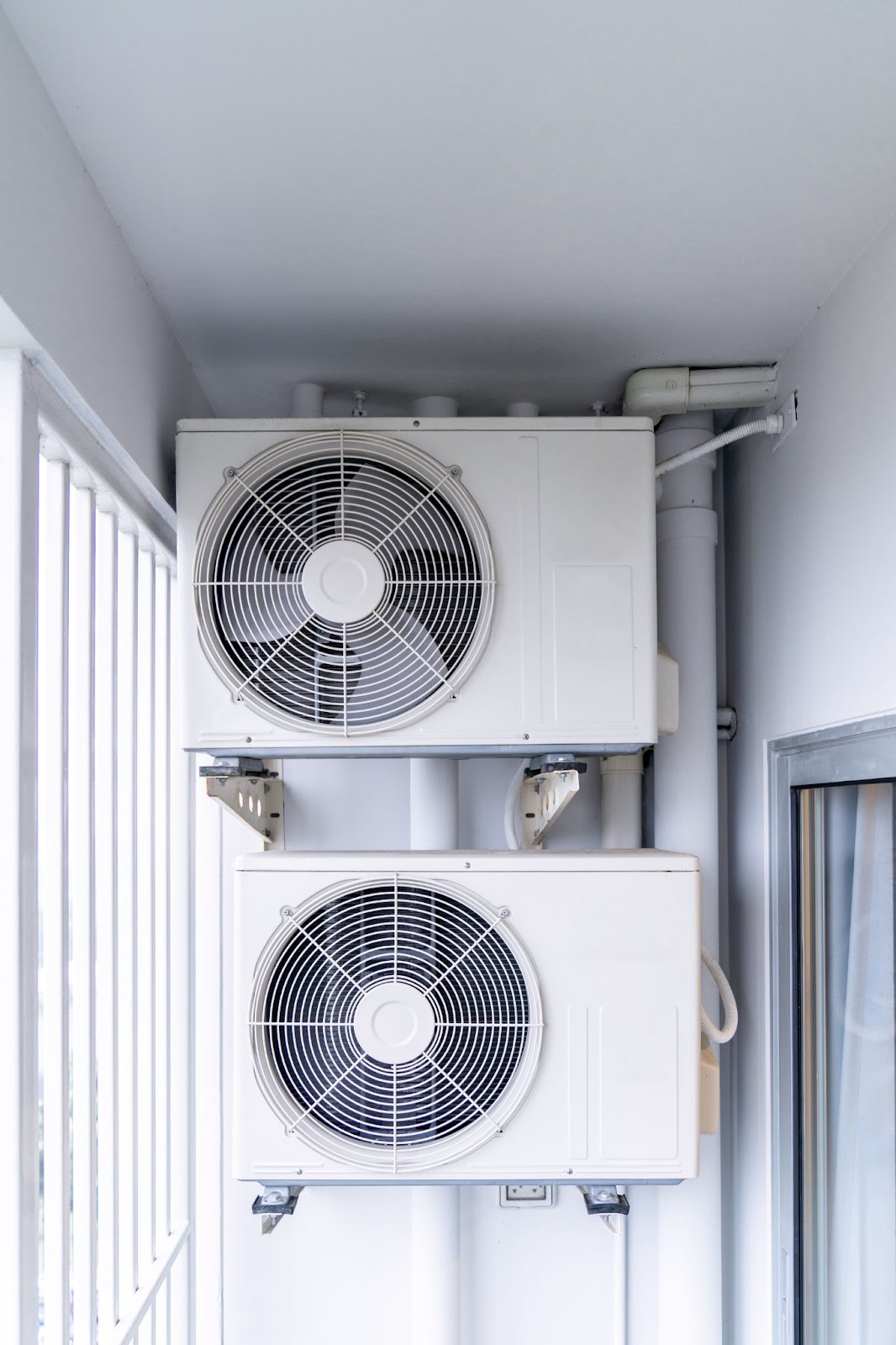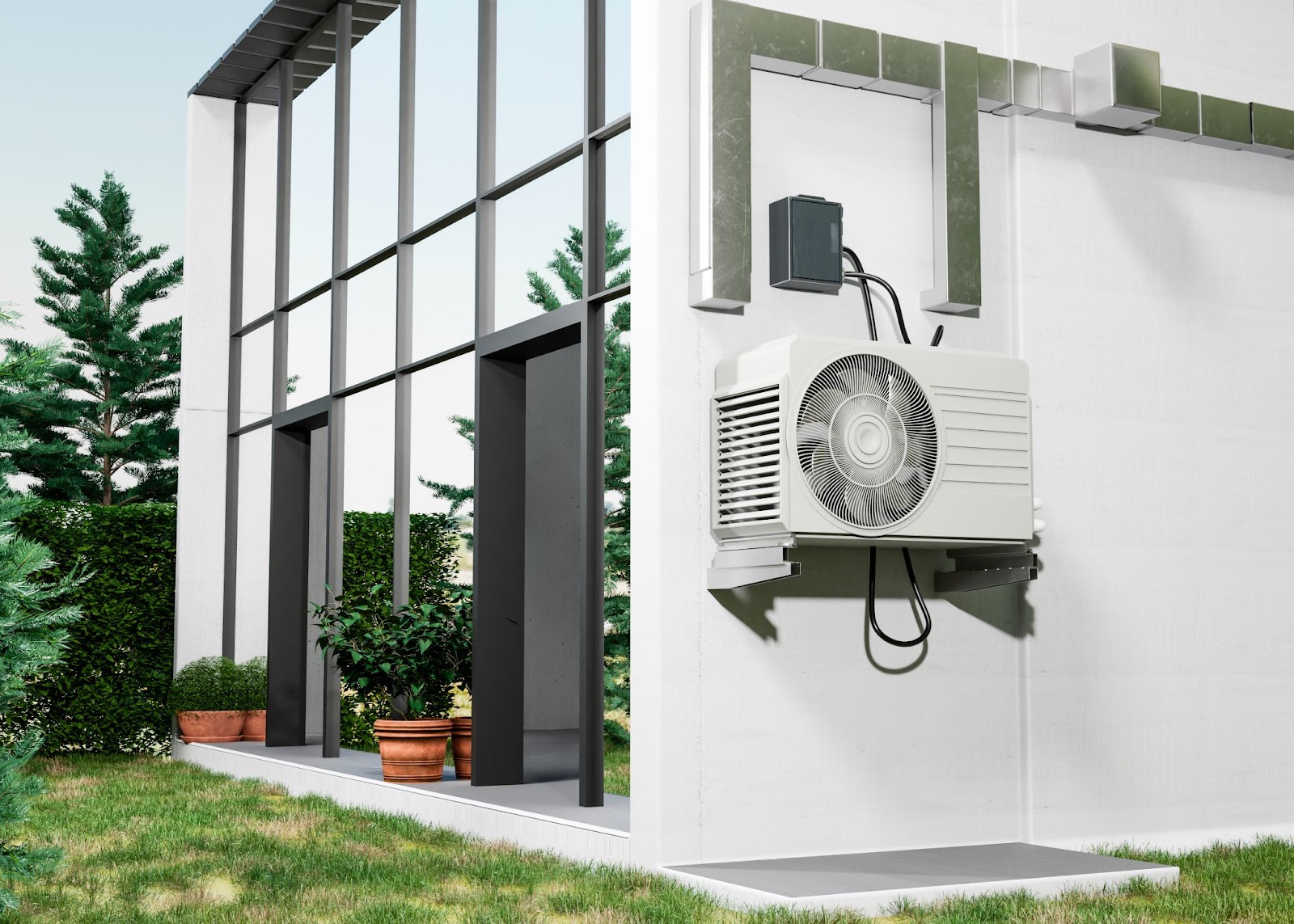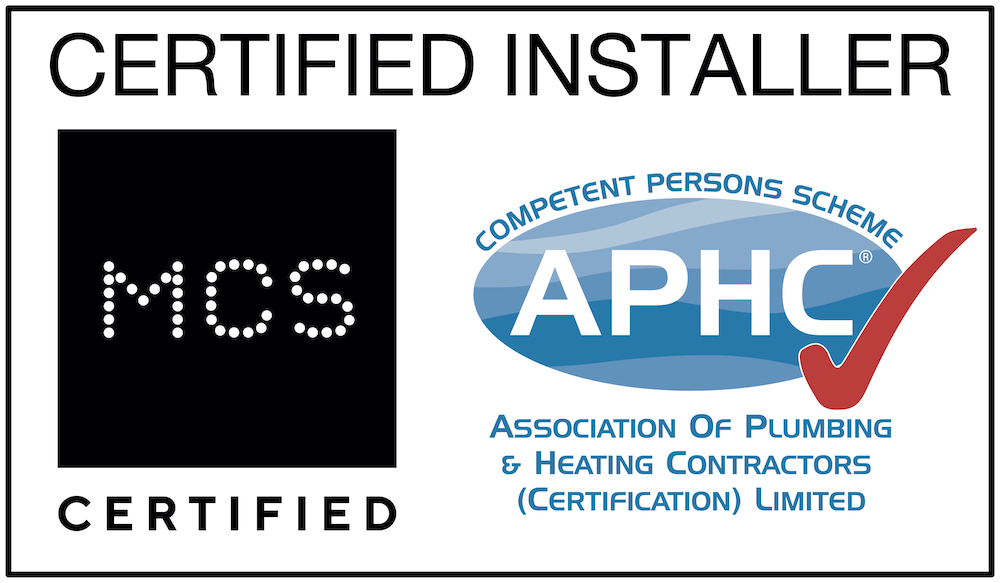How Does An Air Source Heat Pump Work?
July 26, 2023
 As climate change concerns grow, the need for energy-efficient and eco-friendly heating and cooling systems has become more critical than ever. One such technology that has gained popularity in recent years is the air source heat pump. This blog will delve into the fascinating world of air source heat pumps, exploring how they work, their benefits, and common questions users may have.
As climate change concerns grow, the need for energy-efficient and eco-friendly heating and cooling systems has become more critical than ever. One such technology that has gained popularity in recent years is the air source heat pump. This blog will delve into the fascinating world of air source heat pumps, exploring how they work, their benefits, and common questions users may have.
Table of Contents
What is an Air Source Heat Pump?
How Does an Air Source Heat Pump Work?
2.1 The Basic Principles
2.2 Components of an Air Source Heat Pump
Efficiency and Environmental Benefits
3.1 Energy Efficiency
3.2 Environmental Impact
Installation and Maintenance
4.1 Installation Process
4.2 Maintenance Requirements
Comparing Air Source Heat Pumps to Other Systems
Frequently Asked Questions (FAQs)
-
 What is an Air Source Heat Pump?
What is an Air Source Heat Pump?
An air source heat pump (ASHP) is a type of renewable energy system that uses the outside air as its heat source. It can extract heat from the air, even in colder climates, and transfer it indoors to provide heating during winter. In the summer, the process can be reversed, allowing the heat pump to work as an air conditioner to cool the indoor space.
- How Does an Air Source Heat Pump Work?
2.1 The Basic Principles
The functioning of an air source heat pump relies on the principles of thermodynamics. It involves the conversion of refrigerant from a low-pressure, low-temperature gas into a high-pressure, high-temperature gas. The pump consists of an evaporator, a compressor, a condenser, and an expansion valve – all playing vital roles in the heat exchange process.
2.2 Components of an Air Source Heat Pump
- Evaporator: This component absorbs heat from the surrounding air and turns the liquid refrigerant into a low-pressure vapour.
- Compressor: The low-pressure vapour is then compressed, increasing its temperature and pressure significantly.
- Condenser: The hot vapour passes through the condenser, where it releases its heat into the indoor space or the water tank for domestic hot water heating.
- Expansion Valve: After the heat is released, the refrigerant becomes a low-pressure liquid again, and the cycle continues.
-
 Efficiency and Environmental Benefits
Efficiency and Environmental Benefits
3.1 Energy Efficiency
One of the significant advantages of air source heat pumps is their high energy efficiency. Compared to traditional heating systems, they can produce several units of heat for every unit of electricity used. This makes them a cost-effective option for long-term energy savings.
3.2 Environmental Impact
ASHPs have a lower carbon footprint compared to conventional heating systems, primarily if the electricity they use is generated from renewable sources. By relying on the ambient air as a heat source, they significantly reduce greenhouse gas emissions, helping combat climate change.
- Installation and Maintenance
4.1 Installation Process
The installation process of an air source heat pump (ASHP) is a crucial step that determines the system’s efficiency and overall performance. Proper installation ensures that the heat pump operates optimally, providing efficient heating and cooling to the indoor space. Here’s a detailed breakdown of the installation process for an air source heat pump:
Site Assessment:
Before beginning the installation, a thorough site assessment is conducted by a qualified HVAC technician. The technician evaluates the property’s specific requirements, such as the size of the indoor space, the level of insulation, and the climate conditions in the region. They will also consider the best location for the outdoor unit and the indoor unit, taking into account factors like available space, airflow, and noise considerations.
 Outdoor Unit Placement:
Outdoor Unit Placement:
The outdoor unit of the air source heat pump is commonly referred to as the “condenser.” It houses the compressor and other critical components. The technician will select a suitable location for the condenser, typically outside the building. It should be positioned in a well-ventilated area, away from obstructions, such as tall vegetation or structures that might restrict airflow. The chosen location should also be accessible for maintenance purposes.
Indoor Unit Installation:
The indoor unit of the heat pump, known as the “evaporator,” is typically installed within the building, usually in a utility room or basement. This unit is responsible for delivering the heated or cooled air into the indoor space. The technician will ensure that the evaporator is placed where it can effectively distribute the conditioned air throughout the building. They will also connect the evaporator to the ductwork or air distribution system.
Refrigerant Lines and Electrical Connections:
The heat exchange process in an air source heat pump relies on refrigerant lines that connect the indoor and outdoor units. These lines circulate the refrigerant between the evaporator and the condenser. The installation technician will carefully connect and insulate these lines to prevent any energy losses or refrigerant leaks.
Additionally, electrical connections are essential for the proper functioning of the heat pump. The technician will make sure that the system is adequately wired to the electrical supply, ensuring that it meets the electrical code requirements.
Ductwork and Airflow Considerations:
For buildings with an existing forced-air heating or cooling system, the air source heat pump can often utilise the same ductwork. However, the technician may need to make adjustments to ensure that the ductwork is compatible with the heat pump’s airflow requirements. Proper duct sizing and sealing are crucial to maintain the system’s efficiency and prevent air leakage.
Testing and Commissioning:
Once the installation is complete, the technician will perform a series of tests to ensure that the air source heat pump is working correctly. This includes checking the refrigerant levels, verifying the airflow, testing the electrical connections, and confirming that the system is heating or cooling effectively. Any adjustments or fine-tuning required will be done at this stage to achieve optimal performance.
User Training:
After installation and testing, the technician will provide user training to the building’s occupants. This training includes instructions on how to operate the heat pump, adjust settings, and perform routine maintenance tasks. Educating users about the system’s proper usage ensures that it functions efficiently and prolongs its lifespan.
4.2 Maintenance Requirements
Air source heat pumps require regular maintenance to ensure optimal performance. Tasks such as cleaning or replacing filters, checking refrigerant levels, and inspecting components for wear and tear should be carried out by a qualified technician.
- Comparing Air Source Heat Pumps to Other Systems
When choosing a heating and cooling system, it’s essential to consider the pros and cons of each option. While air source heat pumps have their advantages, they may not be the best fit for all situations. Other heating systems, like geothermal heat pumps and traditional furnaces, may have their merits depending on factors like location, budget, and specific heating needs.
Conclusion
Air source heat pumps offer an energy-efficient and environmentally friendly alternative to traditional heating and cooling systems. By harnessing the heat from the surrounding air, these pumps provide cost-effective heating and cooling solutions while reducing carbon emissions. As technology continues to advance, air-source heat pumps are likely to become even more efficient and widespread, contributing to a greener and more sustainable future.
Frequently Asked Questions (FAQs)
Q1: Are air source heat pumps suitable for extremely cold climates?
Yes, modern air source heat pumps are designed to work efficiently in cold climates. However, their efficiency may decrease slightly in extremely low temperatures.
Q2: Can air source heat pumps be used for cooling as well?
Yes, air source heat pumps can be reversed to provide cooling during hot weather, acting as an air conditioner.
Q3: Do air source heat pumps make a lot of noise?
Newer models are designed to operate quietly, but some noise may be noticeable, especially when the compressor is running. Proper installation can also minimise noise levels.
Q4: Are air source heat pumps eligible for government incentives or rebates?
In many regions, governments offer incentives and rebates to encourage the adoption of renewable energy systems, including air source heat pumps. It’s essential to check with local authorities or energy providers for available incentives.


